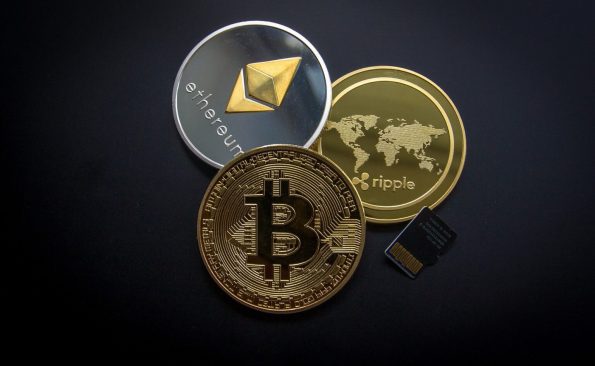As the crypto revolution grips the global finance sphere, people have grown increasingly curious about relevant concepts in the crypto world. Do you find yourself struggling to keep up with buzzwords like coins, tokens or blockchain? Calm your nerves, you are not alone.
Quite notably, Coins and tokens are used often used interchangeably in the crypto world. Many people assume that they are literally one and the same, with no difference between them. This could not be further from the truth.
While coins are built to solve the inefficiencies in international fiat systems as a global medium of exchange, Tokens are often created for more specific purposes.
To draw a line between them, we must first understand the mean of the word Cryptocurrency.
What is Cryptocurrency
A currency is any item that can be exchanged for something of value. In literal terms, Cryptocurrency refers to a currency that is generated from a computer network encoded cryptography. Coins and Tokens are subsets of the larger domain of cryptocurrency.
Think of Cryptocurrency as Science while Coins and Tokens can be likened to Physics and Chemistry.
Having gotten a glimpse into the two concepts, now let’s examine them in detail
Token vs Coin: What is a Coin?
Digital coins are basically computer codes acting like money. You can think of it just like the coins and pennies in your piggy bank.
However, unlike your physical pennies or gold coins, crypto coins are fully digital. You cannot touch, feel or carry them physically. A digital coin is essentially an asset that is native to its own crypto blockchain.
How is a Coin Used?
Often, the only purpose they serve is to outrightly be used as money i.e. as a medium of exchange for goods and services as well as a store of value.
In essence, the key functions of crypto coins are as follows;
- To make payment (or receive payments) for goods and services.
- As a store of value i.e. to save your money today for various future endeavours.
- As a unit of account i.e., you can peg the value of goods and service in the numeric terms or value attached to them.
Digital coins allow people to make transactions directly among themselves without a bank, government or any institution acting as an intermediary.
During these peer-to-peer transactions, there are no physical coins changing hands. All the crypto coins exist in form of computer codes on a giant global ledger called the blockchain.
This ledger is similar to your traditional bank ledger. It keeps track of all the transactions and is checked and verified by gargantuan network computers around the world.
Notable Examples of Crypto Coins
Coins are cryptocurrencies that possess a blockchain and as a result, is entirely independent.
Notable Coins on the crypto-market today are Bitcoin (BTC), Ether (ETH), Dogecoin (DOGE) and many others. Industry watcher, Coinmarketcap lists over 900 coins on its platform. Each of these coins exists on its own individual blockchain.
To make things a little clearer:
Bitcoin exists, operates and functions on the Bitcoin blockchain. Likewise, Ether exists, operates and functions on the Ethereum blockchain. This is obtainable for all other coins that exist on the crypto-market.
Token vs Coins: What is a Token?
Tokens are also a cryptocurrency, but they are not digital coins. Despite how close they are in terms of how they are used, there is a chain of differences between them.
Crypto-tokens are mini forms of currency that are created on an existing blockchain. They depend wholly or partly on the functionalities of the blockchain for their own existence and relevance.
Tokens are used for specific purposes such as; creating and facilitating smart contracts. Today, the most common open-source blockchain for the proliferation of tokens is Ethereum.
Developers build Tokens on the Ethereum platform, through the use of Decentralized Apps (DApps). Such tokens are specifically known as the ERC-20 tokens.
How is a Token used?
According to guidelines published by the Swiss financial regulatory agency (FINMA), tokens can be used in four different forms. Each of them is geared towards the goal of gaining capital when users spend the tokens on the specific DApp that they are built for.
The definitions of a token are as follows:
- Utility Tokens: These tokens are used to gain exclusive access to a certain part of a DApp, a product offering or a particular service. Due to their limited supply, utility tokens are often increasing in value as more users demand them.
- Payment Tokens: These tokens are closely similar to how coins function. But they quite limited and specific in their usage. Payment tokens are often solely used for transactions on a particular platform or exchange.
- Security/Asset Tokens: These are tokens that are issued by the initial token sale (ITS), or IDO. During this virtual exercise, people will invest their money in a tokenized asset with the aim to make a profit.
- Equity Tokens: These types of tokens are quite uncommon at this time. Equity tokens are tokens that represent equity or stock in a company.
Platforms built through the use of smart contracts and tokens are often called Decentralized Finance (DeFi) Platforms. Literally, anyone can make their own custom token on these decentralized blockchain platforms.
Notable Examples of Tokens and NFT Platforms
A key example of tokens on the market today is Non-Fungible Tokens (NFTs).
NFTs have a unique identity code and metadata that cannot be recreated. They are often used to purchase units or parts of real-world assets that have been converted into tokens through the use of smart contracts.
When such assets are traded, the digital currency used to denominate them and facilitate their trade are known as NFTs. Here are few token platforms today;
WePower (WPR)
WePower is a great example of a crypto-token that represents a physical asset — WPR represents electricity.
WePower is a DApp that allows individual users to buy and sell units of electricity on the Ethereum blockchain using smart contracts.
Its residual token is called WPR and represents a claim to specific amounts of energy.
At press time, the current price of 1 WPR is $0.043.
Polkamarkets (POLK)
Polkamarkets is a platform built to integrate Decentralized Finance (DeFi) into Information exchange & Prediction markets. Polkamarkets runs on an interoperable and decentralized blockchain that is based on the Polkadot blockchain.
With Polkamarkets, you get to earn tokens when you make predictions about real-life events ranging from politics, election results as well as popular sports events.
The Token is denominated in $POLK. At press time it’s worth $2.5USD/POLK
Difference between Tokens and Coins
How they Work
Coins essentially are computer network codes that act as money on a specific blockchain. They offer a stable store of value and means of exchange on a specific blockchain.
Conversely, you may think of tokens as something like shopping coupons. They are denominated in – (built on) the $USD or any other fiat currency – (the blockchain) and usually can only be spent for specific purposes – (smart contracts) in a particular store – (the token’s platform).
Without the USD, the Coupon would not have a relevant type of value. Likewise, without a blockchain and coin, a Token will lose its functionality and relevance.
How they are created
While Crypto coins are created through a complex process called mining. It involves solving mathematical puzzles to validate and record transactions on the blockchain. They will continue to exist perpetually as long as the parent Blockchain exists. Just as the USD will continue to possess value (albeit at varying levels) as long as the US economy continues to exist.
Unlike coins, tokens are not created from the scratch. They are usually app-specific. Optimized to make transactions on a limited platform or for specific contracts. Tokens come into being when developers create smart contracts.
Validity
Usually, Token/Application developers will have to keep paying miners and network owners who validate, record and secure their transactions on the blockchain. They make these payments in the native currency of the blockchain that they have chosen to build the token on.
For instance, to host Tokens on Ethereum, Developers and users will have to pay Ether to the miners and facilitators of the Ethereum blockchain.
As illustrated above, the store has to keep purchasing raw materials for the coupon-ized product with USD, to be able to continue to create something of value for the customers to exchange the coupons for.
Conclusion
Coins are tokens that are peas of the same pod. They are both revolutionary value exchange mechanisms of modern hi-tech cryptography.
While the differences between them might seem a bit obscure to the untrained eye. The easiest way to observe their core differences is to examine their distinct features as we have done in this article.












